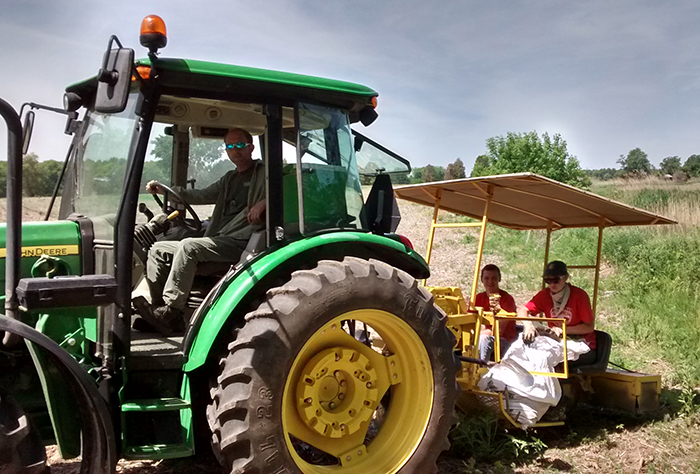
Parts of Chatham-Kent got a lot greener this year thanks to the efforts of the Lower Thames Valley Conservation Authority (LTVCA).
The LTVCA wrapped up its Greening Partnership program last week as it planted the last of nearly 130,000 trees in more than two-dozen locations across the municipality.
Greg Van Every, environmental project co-ordinator with the Authority, had anticipated a strong year but demand outstripped even his most optimistic predictions.
“We used to plant about 60,000 to 65,000 each year. Last year we were over 80,000 and we expected we would reach 100,000 based on our open house in March,” he said.
Amanda Blain, a land stewardship technician with the LTVCA, and one of five people on the planting crew, said it’s been a good season.
“I was concerned a little bit because we had so many more trees to plant but the weather cooperated,” she said.
Tree-planting sites vary in size from a few hundred trees to 35,000 at one site.
“We’re able to plant about 5,000 per day,” she said.
The LTVCA plants primarily native Carolinian trees but at a recent project near Thamesville, eight acres of Jack Pine were planted.
“There is a growth of Jack Pine in Michigan near the border and it’s the only kind of tree where the Kirtland Warbler nests,” she said.
Van Every said the decision to plant Jack Pine was on a plot of land willed to the LTVCA by a longtime supporter.
“Randall VanWagner (Manager of Conservation Lands and Services) deserves the credit for that decision,” he said. “It will be an added bonus if the warbler nests here.”
Van Every said at a maximum of $3 per tree (including planting) the program is a tremendous value for landowners.
In a previous interview with the Voice, he said planting trees benefits everyone.
“To a farmer, the key financial reason to plant windbreaks is soil quality. The trees slow down the wind and shelter the soil. It doesn’t allow the land to dry out as fast and provides more moisture for the land during the growing season,” he said. “From an environmental perspective, trees enrich the air and water quality in a region.”
“Trees product oxygen and help purify the air,” he added. “Roots in the soil slow down run off into our lakes and rivers, providing more balance.”

drives a tractor while students Brandon and Jennifer plant Jack Pines.






